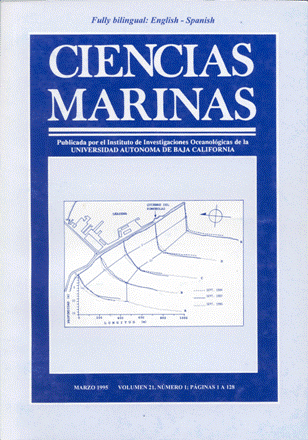Genetic variation in two populations of the marine calanoid copepod Acartia californiensis Trinast
Main Article Content
Abstract
Genetic variation of the marine calanoid copepod Acartia californiensis Trinast was studied from two close populations, Estero de Punta Banda, Baja California (Mexico) and Mission Bay, California (USA). The study was conducted with allozymes using a vertical polyacrylamide microelectrophoresis of 11 enzymatic systems and one buffer system. Acartia californiensis presented reliable banding patterns in six systems and eight loci, from which only PGI-1 was polymorphic, with P0.95 = 0.125 in both populations. The heterozygosity observed in Estero de Punta Banda was 0.060 ± 0.060 and 0.035 ± 0.035 in Mission Bay. There was a statistically significant deficiency in heterozygosity in Mission Bay (D = -0.477) when compared to the expected Hardy-Weinberg equilibrium, but not in Estero de Punta Banda (D = -0.096). Nei’s genetic similarity (1978) between the two populations studied was 0.994, with a genetic distance of 0.006, which proves the lack of differentiation between these populations. The results showed the existence of a genetic flow which was very likely established by a passive dispersal of diapause (resting) eggs that this species produces. They are very likely carried inward and outward by the tidal flux and reflux, and transported South by the California Current and north by Davidson’s Coastal Countercurrent. The polymorphism and heterozygosity of the A. californiensis populations studied here are among the lowest when compared to other genetically characterized copepods. This is the first study conducted on the genetic variation of a calanoid copepod confined to estuarine waters or coastal lagoons using allozymes. A broader study is needed that covers a greater number of populations (locations) and loci.
Downloads
Article Details
This is an open access article distributed under a Creative Commons Attribution 4.0 License, which allows you to share and adapt the work, as long as you give appropriate credit to the original author(s) and the source, provide a link to the Creative Commons license, and indicate if changes were made. Figures, tables and other elements in the article are included in the article’s CC BY 4.0 license, unless otherwise indicated. The journal title is protected by copyrights and not subject to this license. Full license deed can be viewed here.

